Generativity vs. Stagnation: How to Rethink Purpose, Career, & Growth in Middle Adulthood
You’ve hit your goals, raised a family (or regret not having one), maybe built a career—but now you’re quietly wondering, “Is this all there is?” That question sits at the heart of generativity vs. stagnation, a midlife turning point. This guide explores what it means, how it affects your work and well-being, and what to do if you’re feeling stuck or ready for change.


Back
13 mins read
It sneaks up on you. You don’t notice it at first.
One day, you’re busy ticking off life goals—from promotions to milestones, or maybe a growing family. Then comes a quiet shift. A longing to make a deeper impact. A fear of wasting your potential.
You may no longer make those impulsive, emotional, or financial decisions from your 20s and 30s. But now you're left with a deeper question: Is there more to life than just, you know... all of this?
Welcome to what psychologists call Generativity vs. Stagnation.
It’s a key emotional and psychological turning point described in Erik Erikson’s theory of psychosocial development. This stage usually emerges in middle adulthood, between the ages of 45 and 65. Like other life stages, it plays a big role in one's psychosocial development and feelings of fulfillment and contentment with one's life.
If you’ve found yourself asking, “Is this it? Did I make a difference?” know you’re not alone. These questions are completely normal during this stage of life.
Let’s talk about what this stage really means, how it fits into the bigger picture of life development, and how to recognize where you stand.
Generativity vs. Stagnation: One of Erikson’s Eight Stages of Psychosocial Development

Developmental psychologist Erik Erikson proposed that we move through eight key stages of psychosocial human development across our lifespan. At each stage, we face a central conflict or task that shapes our sense of identity, belonging, and purpose.
His wife and collaborator, Joan Erikson, later expanded on his work—especially the stage of Generativity vs. Stagnation—adding that this drive often deepens with age through continued reflection, flexibility, and renewed engagement with life.
According to Erikson, how we resolve each stage influences how we move into the next. These developmental stages build on one another like emotional milestones.
Here’s a simplified overview:
- Trust vs. Mistrust (Infancy) – Can I trust the world?
- Autonomy vs. Shame and Doubt (Early Childhood) – Can I do things on my own?
- Initiative vs. Guilt (Preschool Age) – Is it okay for me to take action?
- Industry vs. Inferiority (School Age) – Can I be competent and productive?
- Identity vs. Role Confusion (Adolescence) – Who am I, really?
- Intimacy vs. Isolation (Young Adulthood) – Can I form close, lasting relationships?
- Generativity vs. Stagnation (Middle Adulthood) – Will I contribute something meaningful?
- Ego Integrity vs. Despair (Late Adulthood) – Did my life have value?
Each stage is an invitation, a question life asks of us.
In middle adulthood, the question becomes whether we’re building something meaningful or slipping into patterns that leave us feeling unfulfilled.
Understanding the Shift: Generativity versus Stagnation
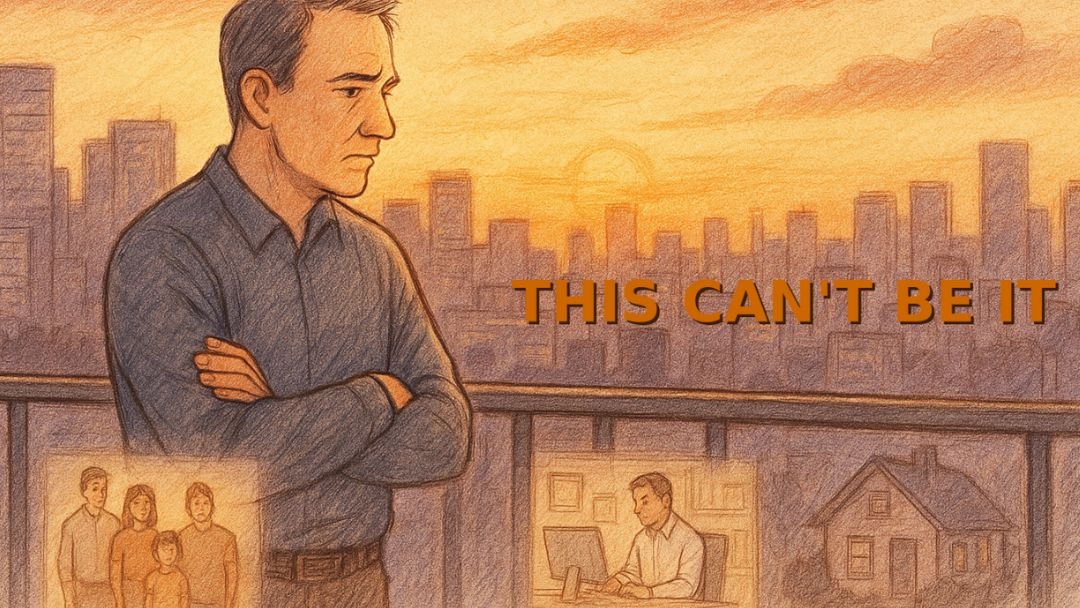
Many people in middle adulthood begin to notice subtle shifts, not just physically or mentally, but also in their identity development. Priorities change, and the old definitions of success start to feel incomplete.
At this point, you might feel pulled in multiple directions—work, family responsibilities, aging parents, or grown kids moving out. The focus starts to move beyond personal success toward something deeper: purpose, legacy, and impact.
For you, it's not just about climbing ladders anymore, but what you’re leaving behind when you step off them.
It’s a season of big changes. But it’s also an opportunity. A chance to shape what you leave behind, uplift those around you, and reconnect with what truly matters. You start to redefine what “success” really means to you now.
If you are in this stage of life, you might find yourself asking:
- “I want to leave a legacy—but I’m not sure where to begin.”
- “Lately, I feel restless... like I’m fading into the background.”
- “Is it too late to start something that truly matters?”
These questions mark what psychoanalyst Erik Erikson described as the seventh stage of psychosocial development: Generativity vs. Stagnation.
What exactly are generativity and stagnation, and why does it matter? Let’s break it down.
What is Generativity?
Generativity is the drive to guide, nurture, or pour into others, especially the next generation. As humans, we have an innate desire to leave a mark on the world in our own way. This quiet urge to contribute or leave something behind continues to grow in middle age.
You might see it show up in parenting, mentoring, volunteering, or starting a project that helps people in some way. Even just sharing what you've learned with someone younger counts.
It’s not always the same for everyone, but one thing is constant: the care and nurture of others in both action and commitment.
What is Stagnation?
Stagnation is the opposite. It’s the experience of feeling stuck, disconnected, or uncertain that your life is making a difference. You may sense boredom, restlessness, or dissatisfaction with the routines that once felt fulfilling.
For some people, this sense of stagnation leads to a deeper identity crisis commonly known as a midlife crisis. It’s that internal tug-of-war where you question your choices, direction, and what truly brings you meaning.
While it can feel disorienting, it’s also a sign that something inside you is asking for growth—not just escape.
Left unaddressed, stagnation can lead to isolation or regret. But like any challenge, it opens the door for transformation if you’re willing to reflect and respond.
Erikson saw this stage as a defining fork in the road—one that shapes how we move forward, even if it’s not the only force at play.
But what does this look like in day-to-day life? How do you know if you’re leaning toward generativity… or slipping into stagnation without even realizing it?
Let’s see how these two states show up in real ways in our work, relationships, and personal goals.
How Generativity and Stagnation Show Up in Everyday Life
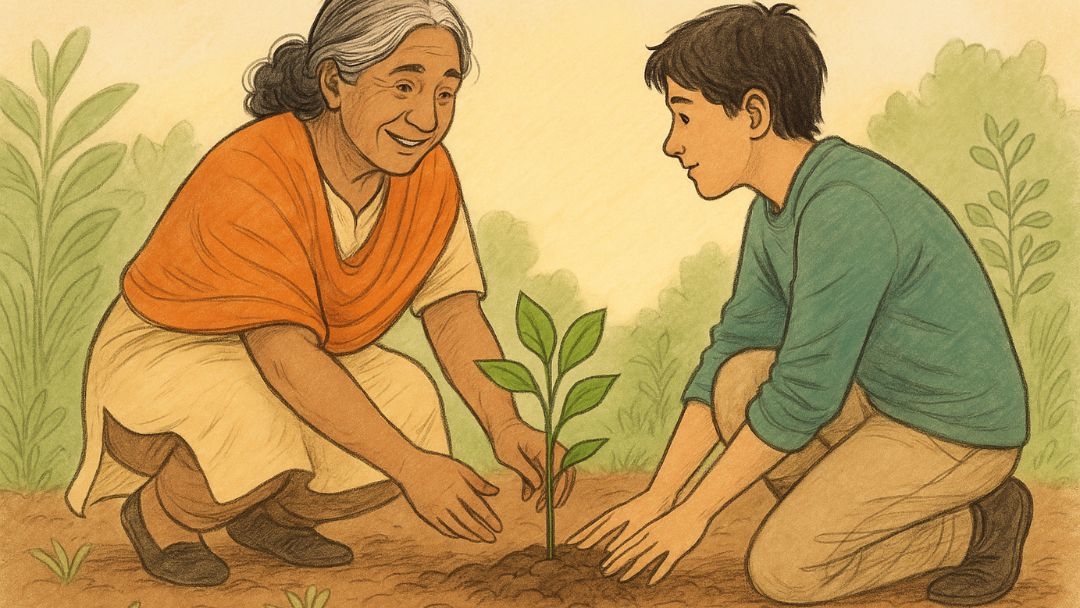
So, now that you understand the theory, how does it actually show up in your everyday life?
The truth is, generativity and stagnation don’t always announce themselves with dramatic moments. Often, they emerge in quiet ways through your habits, your relationships, and the choices you make when no one’s watching. And they don’t look the same for everyone.
Sometimes, you don’t realize you’ve drifted toward one or the other until something shakes you awake.
Signs of Generativity in Real Life
Generativity isn’t always about doing something grand or widely visible. More often, it’s found in the steady, intentional ways we show up for others and build something that might outlast us.
You might notice it in things like:
- Mentoring a younger colleague because you genuinely want to see them grow.
- Teaching your child something you wish someone had taught you.
- Starting a small business, podcast, or project that helps others.
- Writing, sharing, or creating from a place of meaning, not just for profit.
- Volunteering your time or skills in a way that lights you up inside.
- Or even just taking care of your parents with love, knowing they once did the same for you.
In these moments, there’s often a quiet joy. A feeling that what you’re doing matters, even if it doesn’t make headlines.
Studies show that people who lean into generative activities often report higher life satisfaction, stronger global cognitive functioning, and better relationships.
Signs of Stagnation in Real Life
On the flip side, stagnation can creep in slowly. You might not call it that, but you feel it.
It might sound like:
- “Lately, it feels like I'm just on autopilot.”
- “I’m not sure anything I do really matters anymore.”
- “At my age, starting something new feels impossible.”
- “Everyone else seems to be building something meaningful—what happened to me?”
- “I’ve outgrown this job, but I don’t know what else I’m even qualified for.”
Over time, this quiet erosion can lead to emotional numbness, burnout, or a sense of drifting. You may start to pull back from relationships or give up on goals you once cared about.
In some cases, it can affect not just your mood but your intimate relationships, motivation, and even physical health, turning what began as a quiet slump into a deeper developmental challenge.
But even these experiences aren’t final verdicts. They’re signals. Clues that something inside you is ready for change.
So, what does all this mean for you?
At different points in life, you may face the choice to be generative or stagnant, often more than once. Do you want to keep growing, evolving, and pouring into others? Or are you clinging to comfort, fearing change, or staying stuck in a life that no longer fulfills you?
The good news? Achieving generativity isn’t just a one-time milestone — it’s a mindset.
Related: 8 Dimensions of Wellness — Tips for Cultivating a Happier, Healthier, and More Fulfilling Life
Careers, Calling, and the Search for Meaning

One of the clearest mirrors of the generativity mindset is the work we choose to do and how we feel about it.
When you hit the generativity vs. stagnation stage, your work life can suddenly feel like a spotlight. The same job that once felt secure or impressive might now feel like a mismatch. That’s because this stage isn’t just about how much you’ve achieved—it’s about whether what you’re doing still matters to you.
Maybe your career never truly aligned with your interests or personality in the first place. Or maybe it did, once—but now it doesn’t fit who you’ve become. This is common in your 40s and 50s, when life experience, shifting values, and growing self-awareness begin to rewrite your internal definition of success.
Some people start craving a deeper purpose or creative fulfillment. Others want more flexibility, less stress, or work that better supports their relationships or health. And for many, the question becomes practical:
How can I transition into something more sustainable as I think about retirement?
The desire to shift paths at this stage isn’t indulgent. It’s developmental. You’re not just trying to escape burnout—you’re trying to build a life that reflects your evolving values, legacy, and capacity to contribute.
That’s the very heart of generativity.
Why Career Reflection Hits Harder in Midlife
At this point in life, your relationship with work becomes more complex. You’re not just asking, What do I do?—you’re asking, Why does it matter?
You may have spent years climbing a ladder only to realize it’s leaning against the wrong wall. Or maybe the work itself still matters, but the pace, structure, or culture no longer serves you.
Whether you're a parent whose kids are becoming more independent, a caregiver juggling work and family responsibilities, or a high achiever who's checked every box but still feels unsatisfied—this stage tends to surface questions you may have ignored for years.
This stage often brings a subtle reckoning:
- Do I want to keep doing this for another decade or more?
- Does my current job help me live the kind of life I want now?
- What kind of legacy do I want to leave through my work?
Whether you're drawn toward purpose, balance, or reinvention, these aren’t just personal preferences—they’re core signals in the generativity vs. stagnation process.
Signs Your Work Life Is No Longer Serving You
If you’re wondering whether your current path still aligns with who you are, here are a few signs that something deeper might be shifting:
- You feel emotionally disconnected or mentally checked out at work.
- You dread the start of the workweek, even if your workload isn’t overwhelming.
- You’ve stopped caring about growth or creativity in your field.
- You often fantasize about starting over—or winding down early.
- Your job feels at odds with your energy level, values, or well-being.
- You sense you’re no longer building something meaningful—you’re just maintaining.
These feelings can trigger fear or doubt, but they’re also invitations. They signal that your deeper self is asking for more alignment—more meaning, more care, more impact.
Career Change vs. Job Change: Know the Difference
Not all shifts need to be dramatic. Sometimes, a job change—like moving to a different company, reducing hours, or going remote—can reignite a sense of possibility or relief.
Other times, you might need a career change—a new field, role, or professional identity entirely. This could look like starting your own business, moving into a helping career such as teaching or caregiving, or applying your existing skills in a more values-driven way.
The key difference? A job change tweaks where you work. A career change redefines why you work.
In both cases, the goal isn’t to chase a trend—it’s to move toward a life that reflects your capacity for contribution, growth, and authenticity. That’s what generativity looks like in action.
For some, that next step might be starting a freelance business, shifting into consulting, or testing out a passion project on the side. Others explore phased retirement, easing into a slower pace while staying engaged. These paths aren’t about giving up—they’re about evolving in a way that honors both your experience and your energy.
And if you’re not sure where to begin, tools that explore both your personality traits (like the Big Five) and career interests (like Holland Codes) can offer real clarity. They help you understand not just what you're good at—but what’s likely to feel meaningful, energizing, and sustainable for who you are now.
You don’t need to have it all figured out. You just need a willingness to listen to that inner shift—and take one step toward something that feels more like you.
Cognitive Health and Midlife Development
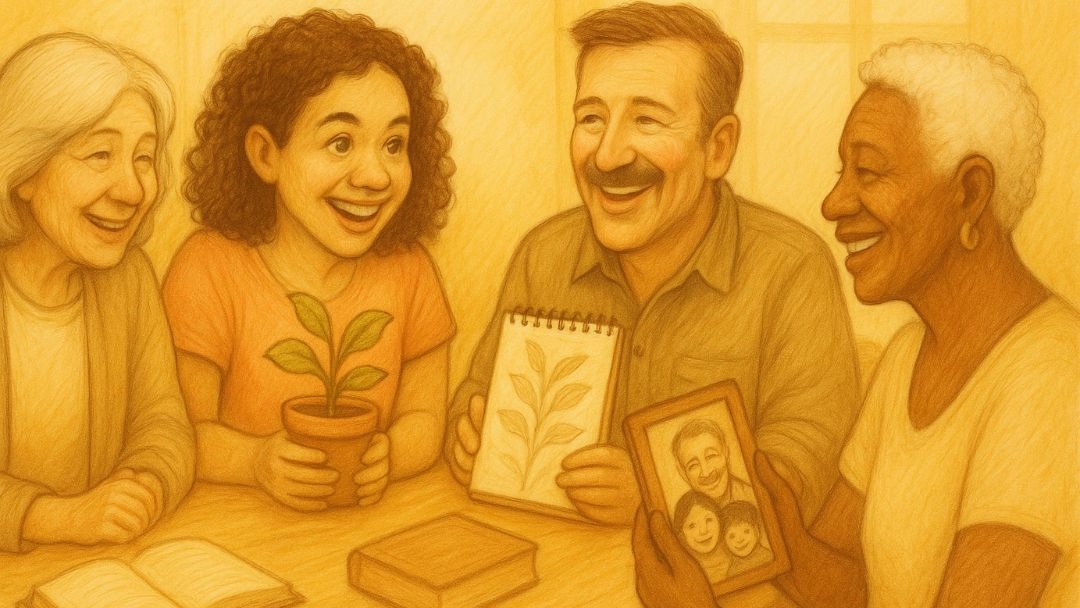
As you move through midlife and begin asking deeper questions about purpose and impact, another area worth paying attention to is your cognitive health. While we often associate this stage with emotional or relational shifts, it’s also a critical time for supporting long-term brain function. After all, staying mentally sharp plays a major role in healthy aging—and in your ability to engage meaningfully with the people and projects that matter to you.
This stage of midlife Eriksonian psychosocial development often brings reflection—not just on what you’ve built, but how you’ve lived. That can include looking back at old habits, missed opportunities, or unhealthy routines.
The good news? It’s not too late to change course.
Cognitive health isn’t fixed. While it’s normal for certain abilities like processing speed to decline with age, research shows that staying mentally active helps preserve core strengths like memory, problem-solving, and emotional regulation.
Strengthening cognitive health during this stage also lays a powerful foundation for what comes next: Erikson’s integrity vs. despair phase. In this eighth and final stage, we look back on life and ask whether it was lived with meaning. Supporting your brain now can help you enter that final chapter with clarity, connection, and fewer regrets. It’s part of what makes successful aging possible—not just physically, but mentally and emotionally.
In short, tending to your mental vitality now isn’t just about memory or sharpness. It’s about showing up fully for the second half of life—and giving yourself the best shot at building a legacy that feels complete.
Tips for Supporting Cognitive Health in Midlife
The goal at this stage isn’t perfection—it’s momentum. Here are a few ways to support your cognitive well-being and keep your brain young as you move through this chapter of life:
- Stay mentally curious. Whether it’s picking up a new hobby or skill, taking a class, or reading outside your usual topics, mental stimulation helps form new neural pathways and keeps your brain engaged.
- Prioritize social connection. Meaningful relationships don’t just nourish your heart—they also support long-term cognitive function. Talk, listen, share ideas. Even casual conversations can have lasting benefits.
- Move your body. Physical activity improves blood flow to the brain and supports memory and focus. You don’t need a gym membership—walking, stretching, or dancing in your kitchen counts. Strength training has proven to impact longevity.
- Watch for burnout. Chronic stress can take a toll on your mental clarity. Boundaries, rest, and moments of stillness aren’t indulgent—they’re essential.
- Challenge your brain regularly. Puzzles, games, creative projects, and even switching up your routine can help keep things fresh and your mind adaptable.
- Check in with yourself. Online IQ tests and brain-training tools aren’t perfect, but they can offer a light-touch way to notice patterns or changes over time. Think of them as a snapshot, not a scorecard.
- Give yourself grace. If you’re looking back with regret, remember: cognitive change is possible at any age. Growth doesn’t have a deadline.
Supporting your mind is part of showing up fully for this stage of life. But before you decide what changes to make, it helps to pause and take stock. What’s working? What’s missing? Where are you on the spectrum between generativity and stagnation—and where do you want to go from here?
Generativity Vs. Stagnation: How to Reflect and Recognize Where You Are
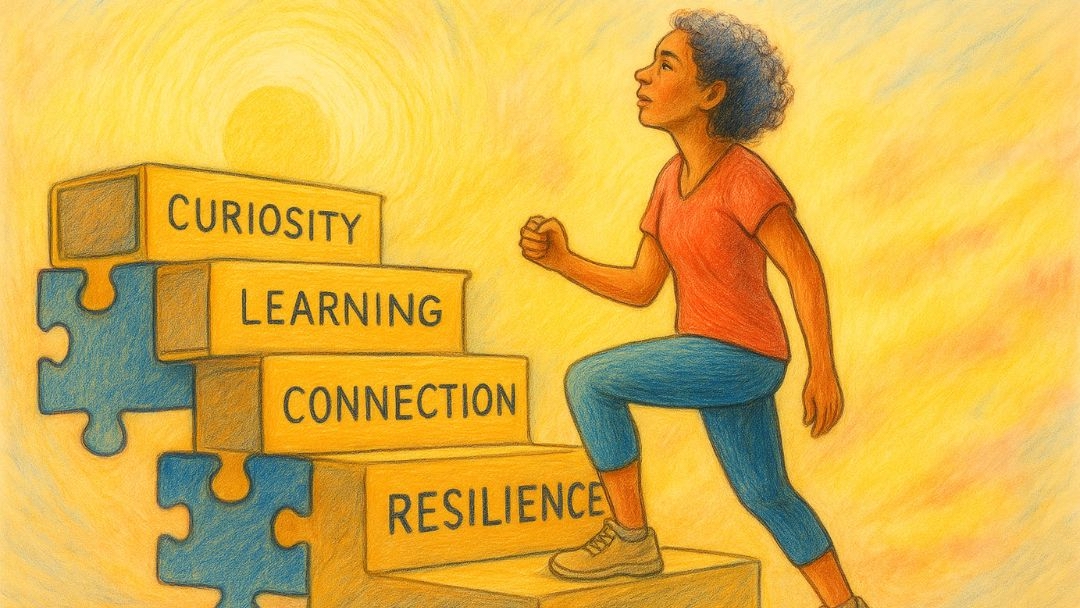
Before you decide what changes to make, it helps to take an honest look at where you are right now.
This stage isn’t about labeling yourself “generative” or “stagnant.” It’s about noticing patterns. It’s about paying attention to the small thoughts, habits, and choices that either move you toward personal growth or quietly keep you stuck.
Ask yourself:
- How do I feel about my achievements so far? Do they leave me with pride or a sense of regret?
- Am I open to change? Or am I clinging to what’s familiar, even if it no longer serves me?
- Do I face my flaws or avoid them? Can I take ownership of the parts of my life that feel off track?
- How do I respond to setbacks? Do I adjust, shut down, or look for someone else to blame?
- Am I helping others grow, or just focused on getting through the day?
- Do I feel connected to a sense of purpose, or am I just moving through the motions?
- When I think about the future, do I feel hopeful, uncertain, or resigned?
There are no “right” answers here, only honest ones. Self-awareness is the first real signpost out of stagnation and toward generativity.
The goal isn’t to judge but to better understand yourself. Once you have a clearer picture, it’s easier to know what kind of support or next steps you might need.
How to Move Toward Generativity and Out of Stagnation
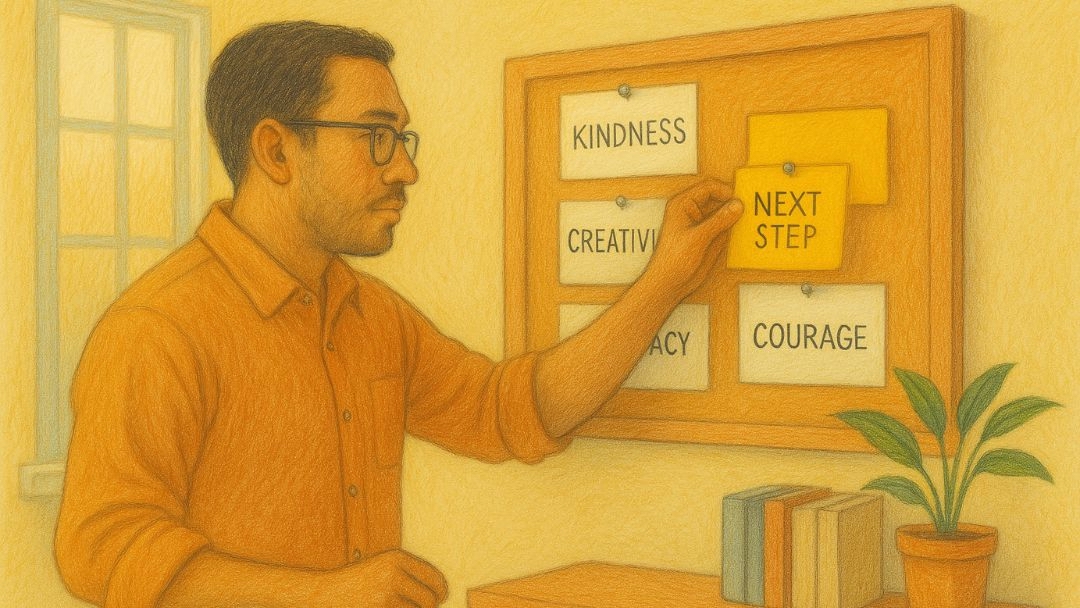
Reflection is powerful, but growth requires movement. Whether you’re already in a generative season or just starting to feel the nudge for something more, here are some simple ways to shift from stagnation to leading a purpose-driven life:
Start Where You Are
You don’t need a grand plan to make an impact. You can offer to help a neighbor with errands. Share life advice with someone just starting their career. Tell your child a story from your own struggles and what you learned.
Even the smallest acts of presence and care, when done intentionally, can become part of your legacy.
Revisit Your Values
Ask yourself: What do I want to be remembered for? Maybe it’s kindness, creativity, resilience, or service. You can align your time and energy once you're clear on your values.
For example, if generosity is important to you, consider setting aside time to volunteer once a month or teaching your kids to give back in small ways.
If you love learning, start a book club or take a course and invite others to join.
Create Instead of Only Consuming
Write a journal about something meaningful. Start a community garden. Organize a simple online workshop, or help a younger colleague with a creative project.
When you create, you’re not just expressing yourself. You're leaving something behind that others can benefit from.
Be Open to Growth
Growth often requires getting uncomfortable. Maybe it's saying yes to a speaking opportunity, even if public speaking scares you.
Or letting go of an old career path and learning something new at midlife. Trying new things, even in small ways, signals to your brain and spirit that you’re still evolving.
Invest in Others
You don’t need a formal title to make a difference in someone’s life. You could mentor someone informally over coffee. Regularly check in with a lonely relative. Help a younger coworker navigate a challenge you’ve already faced.
Being generous with your attention and experience often means more than offering advice. Even better? Show up.
Look for Meaning Beyond Milestones
It’s not always about achievements or accolades. Sometimes the most meaningful work is in nurturing people, showing up through community involvement, or being present in your everyday relationships.
It’s not always about promotions, parenting, or big goals. Maybe you find meaning in being present for a friend in crisis. Or showing up at a community meeting because you care about your neighborhood.
Generativity lives in the ways we invest in people and places, not just in titles or trophies.
It’s Never Too Late to Grow
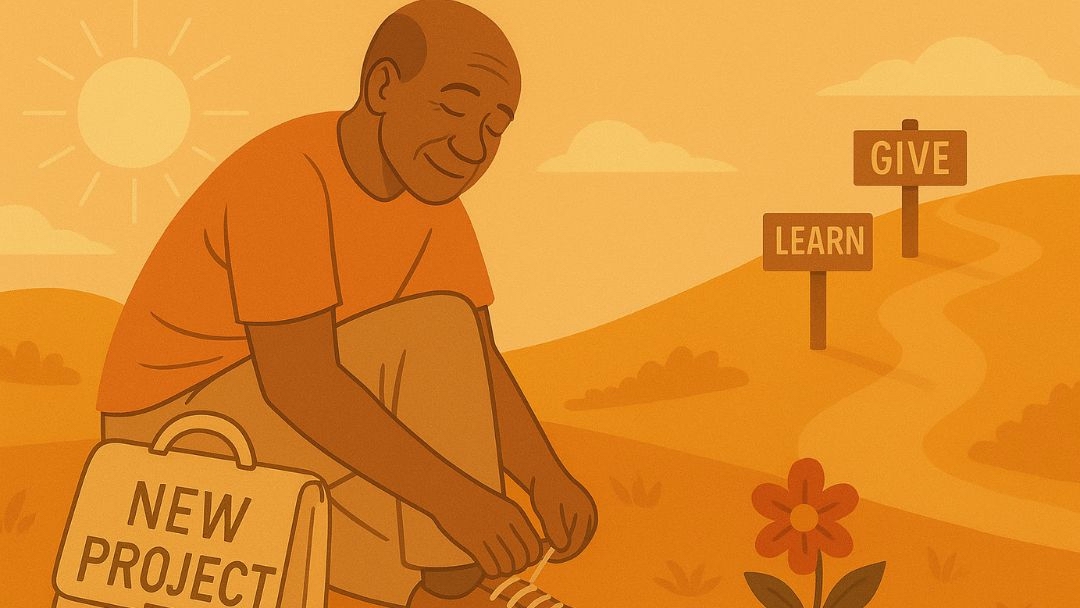
Throughout life, we’re called, sometimes gently, sometimes urgently, to grow, to give back, and to live for something greater than ourselves.
In middle adulthood, that call grows louder. It’s no longer just about chasing goals or checking boxes. It’s about legacy. Impact. Meaning.
This is the heart of Generativity vs. Stagnation. However, it’s important to remember:
Generativity doesn’t look the same for everyone.
For some, it’s parenting or mentoring. For others, it’s creative work, caregiving, or simply being present in your community.There’s no single “right” way to grow.
What matters is whether your choices feel aligned with your values—not someone else’s definition of success.Feeling stuck isn’t failure.
It’s often a sign that something deeper inside you is asking for change.You don’t need a perfect plan.
Even one small, intentional step can shift your direction.You don’t need all the answers.
Sometimes, staying curious and grounded is the most generous thing you can do—for yourself and others.
So take a moment. Check in with yourself.
Where are you right now, and where do you want to grow from here?
Charles Adeoye
Content Writer
Published 11 May 2025


